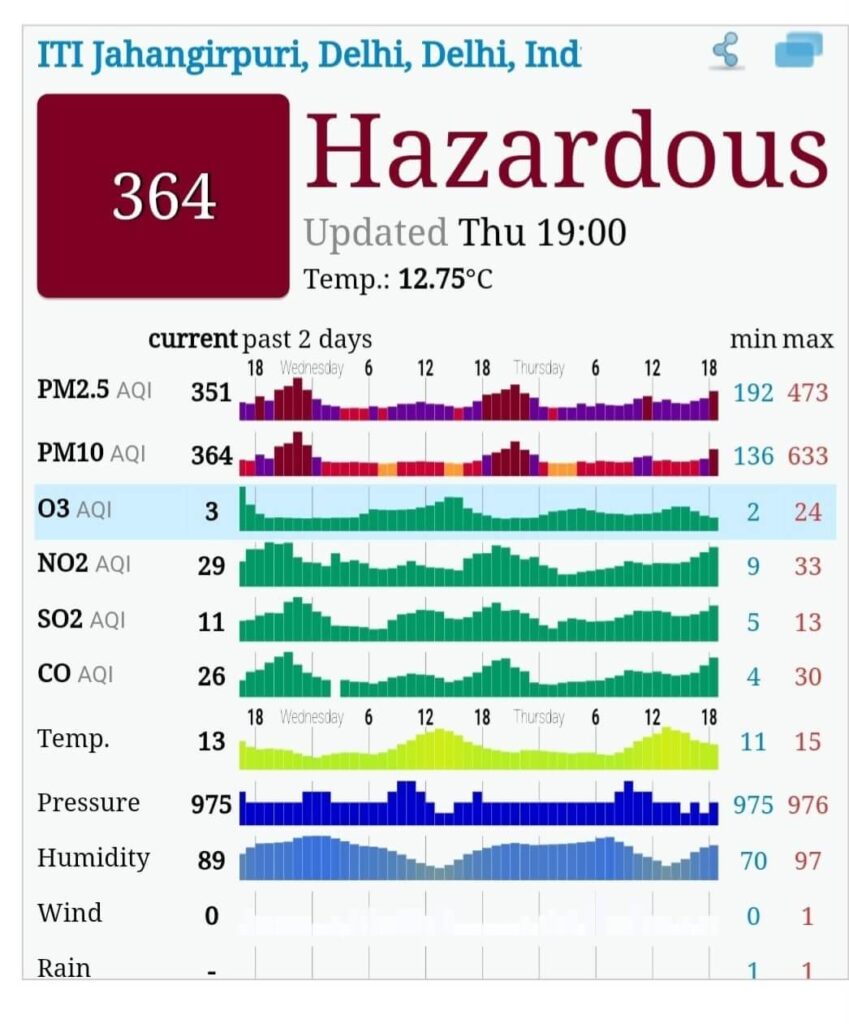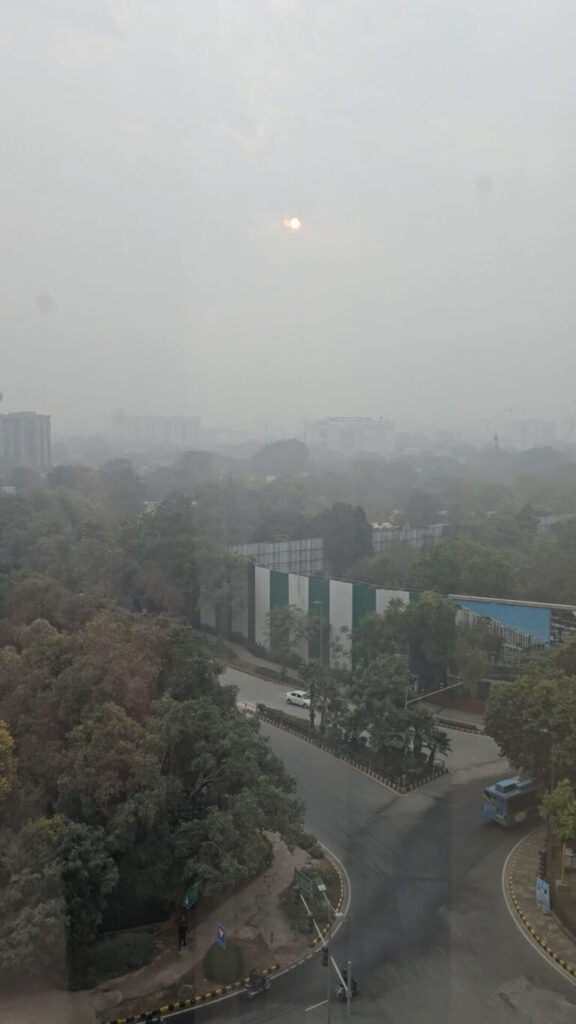For decades, New Delhi has been a city of fascination for me—a place rich in history, culture, and a vibrant spirit that reflects the rising aspirations of India. Yet, my most recent visit was unlike any before. The familiar streets, the towering monuments, the hustle and bustle of life—all were shrouded in an atmospheric haze so thick that it seemed to choke the city itself. It felt like stepping into an “atmospheric sewer,” a harsh term I hesitated to use but one that captures the grim reality.
The air was toxic, hazardous to a degree that I had never experienced before. As someone who has treated coal miners, I found myself empathizing with their plight more than ever. This was no longer just pollution; it was a health crisis on an unimaginable scale. Checking the air quality confirmed what my lungs already knew—the levels of PM2.5 and PM10 were far beyond what could be considered safe. The Air Quality Index (AQI) was a staggering 364, squarely in the “hazardous” zone. The Sun, a symbol of hope and vitality, struggled to penetrate the thick veil of smog. The city was cloaked in a lifeless gray.
I soon found myself battling a severe bout of bronchitis, a cruel reminder of how this toxic air spares no one. The locals, meanwhile, seemed to carry on as though this was normal—a coping mechanism, perhaps, but a dangerous one. Normalizing such conditions only perpetuates the crisis. This cannot and must not endure. Many explained that this situation was not as bad and they have seen worse. None offered any significant long term solutions and many merely shrugged it of as something they just had to endure.
Delhi is not alone in facing such challenges. Around the world, cities are grappling with the dual pressures of urbanization and environmental degradation. I am no environmental expert, but the situation in Delhi feels particularly dire. The causes are well-documented: unchecked vehicular emissions, industrial pollutants, rampant construction dust, and the seasonal burning of crop stubble in neighboring states. The solutions, too, are no mystery. Stricter environmental regulations, better urban planning, cleaner energy sources, and greater public awareness—all are steps that must be taken urgently.
The beauty and resilience of New Delhi deserve better. This is a city that has stood the test of time, surviving invasions, colonial rule, and the upheavals of independence. It has been a cradle of culture, a hub of innovation, and a beacon of hope. It is heartbreaking to see it suffocating under a blanket of pollution.
As visitors, we have a responsibility to raise our voices. As citizens of the world, we share a duty to act. Whether through advocacy, innovation, or simple lifestyle changes, we all have a role to play in combating the global challenge of air pollution. For Delhi, and for every other city struggling with this crisis, time is running out.
I spent 3 days sequestered in a hotel room with medications and air purifiers to recover.
The air we breathe is fundamental to life. It should never be a luxury.


